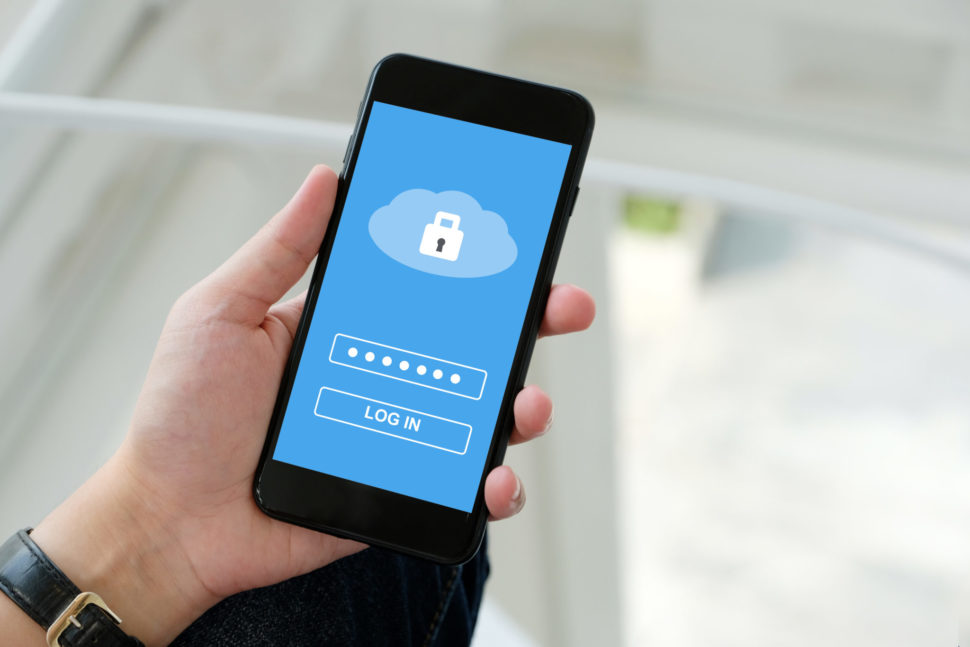Finding ways to bolster your mobile security can be a pain. This goes double when the hardware itself has specific vulnerabilities that put you at risk. This article covers three ways that is changing.
It varies per device and software used, but Android users are familiar with potentially devastating security risks. For example, the Krack Attack WiFi threat and the Cloak and Dagger Attack are specific to Android devices.
But many smartphone users might be in the dark about how to best safeguard their phones. How can you know which security apps to use in the sea of options?
Here are four quick ways to hack-proof your mobile devices with the latest tech.

1. You Still Need to Invest in Security Apps
This might seem like a straightforward strategy, but it can be very frustrating.
The big question you have to ask first is: do you want something free or paid? If you do want a service you pay for, how much can you spend? What is the purpose of the device in terms of usage types and amounts?
It also varies based on what mobile device you are using and its purpose. Your smartphone, for instance, has a great variety of uses. Conversely, you might only use your Apple iPad or Microsoft Surface for work.
A paid app might be better for your smartphone, but a free app might be sufficient for your other devices. All of these questions can significantly cut down the time you’ll need to spend sifting through security apps.
To save you a little time, we compiled quick lists for both Android and Apple devices:
Apple
- Tor Browser – allows for secure web browsing
- Signal – encrypted voice-calling and messaging app
- 1Password – password generator and protector
- NordVPN – web traffic encryption and re-routes using secure VPN
- Lookout – security management with paid identity protection and insurance
Android
- Avast – general firewall, malware detection, and security app (Free!)
- Trend Micro – malware detection, real-time protection, and other features
- AVL – strictly malware protection without other bells and whistles
- Kaspersky Mobile Antivirus – app scanner malware detection that’s 50% off right now
- 360 Security – tons of features in one security app with free options
These are some of the best apps to start making your mobile devices more secure. With these, you can take the first step into making your mobile device reasonably hack-proof.
But the tech world relies on more than just security apps to keep IoT devices safe. New hardware and upcoming network changes also signal new protection tools.
2. Wider Use of Fingerprint Passwords & Face Recognition
Many phone companies have already integrated fingerprint recognition into their devices. At MWC 2018, the Vivo Apex debuted an in-screen fingerprint display scanner. But it isn’t just hardware that makes use of the technology.
From banking apps like Chase and PayPal to the diary app Journal., fingerprints are the future of mobile device protection. Of course, with Apple’s Face ID on the iPhone X, fingerprints might have competition.

Of course, both of these technologies come with their own sets of risks.
The New York Times reported on the potential security risks of fingerprint recognition in 2017. The risk involves the fact that most phones only read partial fingerprints instead of full ones. This means that fingerprint recognition is vulnerable to spoofing.
Is Apple’s Face ID more hack-proof than fingerprint recognition?
Well, Bkav Corp was able to trick Face ID with a mask in November of last year.
While we will have to wait for more demos and tests to verify security, touch ID and Face ID can be added to your current mobile security system for added protection.
In the meantime, here are some useful facts about the two technologies:
- Face ID won’t work if you are wearing a headscarf such as a hijab.
- Touch IDs don’t work if the sensor is wet or dirty.
- Both technologies can be bypassed by passcodes or patterns depending on the device.
- Businesses can apparently track device fingerprinting.
It may seem like there’s just no way to stay any kind of private in an IoT world. Well, the next item on this list might be able to help with that.
3. 5G Connections are Right Around the Corner
Borje Ekholm, Ericsson CEO, told MWC 2018 that 5G is very near to becoming reality.
5G promises larger capacity, lower latency, and gigabit speeds. That also points to lower costs, improved efficiency, and even more insights to mobile traffic. But with increased access comes increased vulnerabilities to IoT threats, right?
Industry specialists speculate that 5G will include better privacy features. It will render useless IMSI catchers (a.k.a. stingrays) according to ZDNet.
Pro-tip: IMSI stands for International Mobile Subscriber Identity and corresponds to a network number from your phone.
These catchers can be used to track communications, but 5G will (supposedly) use encryption. The Subscription Permanent Identifier (SUPI) claims to offer a more private and safe connection.
But 5G won’t truly be implemented until 2019 and 4G/3G both claimed to do that same. We will have to wait and see how this hack proof strategy unfolds.
4. Techwear can Help With IRL Security
Personally, I’ve put off investing in techwear simply because of the cost/benefit analysis. Having it to track fitness is cool and it could help organization, too. But with the high price points of the “good” ones, it never seemed like the right time.
However, new techwear can actually help stop real-world crimes like theft.
Techwear uses Bluetooth technology to connect to your mobile devices. So, if your smartwatch suddenly shows that the device has been disconnected, you might have been pickpocketed.
As The Guardian points out, your device will still likely be less than 50 meters away. With this new tech, you can more swiftly react to the situation and (hopefully) get your phone back.
One last quick tip: don’t buy into devices that claim to be “hack-proof”. The $1,100 USD phone designed by John McAfee claims to be hack proof. But it still runs Android which makes it vulnerable to the same bugs as other devices using the software.



















How do I know that I can trust the Company behind LogDog with all this highly sensitive information?
Even if the creators of the service have only good intentions the data they collect would surely be an extremely attractive target for hackers.
This way they could get access to all of my online accounts at once.
RecoveryBureauC (at)gmail, com offers five star mobile phone monitoring and assets recovery solution. The new AI technology has been the latest trick used by many fake cryptocurrency investment theft. I fell for this deceit just last week when I got a phone call from someone who impersonated my close friend and introduced me to this investment project. He describes just exactly like her and how she’s been benefiting from the profits of the investment so I decided to invest not
knowing I would get tricked. I almost lost about 858,000 USDT of my inheritance funds and money borrowed from different loan agents on this Chinese investment platform.
After few days of losing this huge funds I did thorough search for help and I found RecoveryBureauC (at)gmail, cOm whom I reported my situation. I opened a case with this team and they assured me of a swift action immediately. To my surprise within few hours I reached out to them they were able to retrieve the first tranche of my stolen funds and the remaining subsequently. Their services were seamless and perfect without any hassle. I’m glad I got rescued and I’ll urge you to look this firm up for all asset recovery help. Other services are phone monitoring, catch a suspected cheating spouse, tax evasion, boost of credit scores, upgrade of results, erasing of bad debts etc..
Topnotch